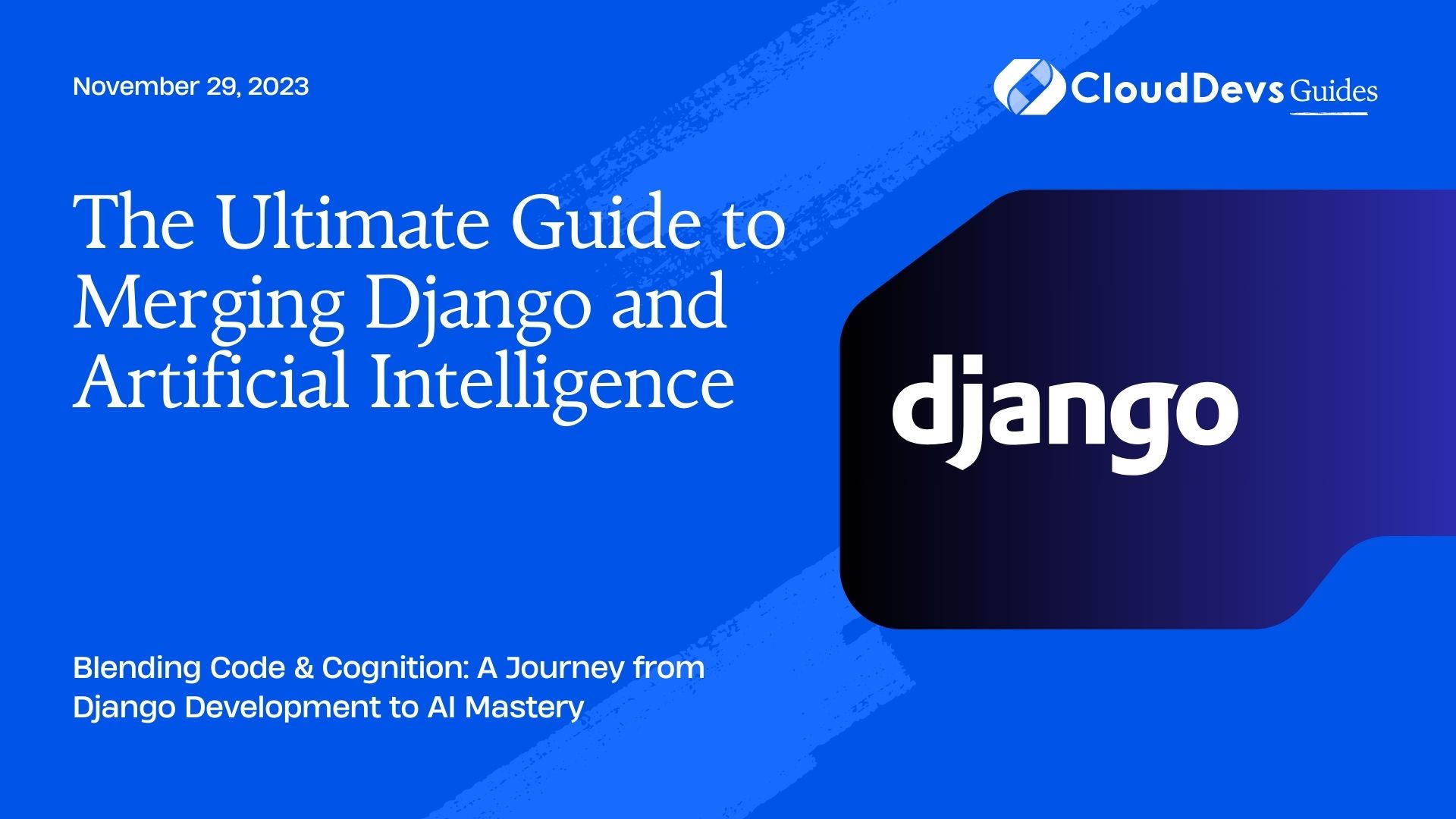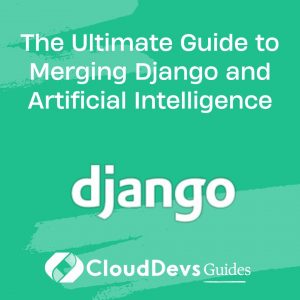The Ultimate Guide to Merging Django and Artificial Intelligence
The modern digital age is marked by two transformative technologies: web development and artificial intelligence (AI). Django, a robust and widely-adopted web framework, provides the structure for developers to build web applications quickly and efficiently. On the other hand, AI has been expanding its wings in multiple domains, offering capabilities from image recognition to natural language processing.
Table of Contents
In this article, we will explore the synergy between Django and AI, offering a roadmap on integrating artificial intelligence into your web application. Along the way, we’ll look at specific examples and code snippets to get you started.
1. Setting Up Django
Before we delve into AI, let’s set up a basic Django web app:
- Install Django:
```bash pip install django ```
- Create a new Django project:
```bash django-admin startproject myaiwebapp ```
- Run the server:
```bash cd myaiwebapp python manage.py runserver ```
2. Integrate AI Libraries
There are several AI libraries available in Python. Some popular ones include TensorFlow, PyTorch, and scikit-learn. Depending on your project requirements, you can choose the most suitable one.
For instance, to integrate TensorFlow:
```bash pip install tensorflow ```
3. Use Cases and Integration
Now that we’ve set up our tools let’s dive into some specific AI use cases:
3.1. Image Recognition:
Suppose you’re building a Django web app for image recognition. You want users to upload an image and then recognize objects in it.
Using TensorFlow’s pre-trained models, such as MobileNet, you can accomplish this.
Here’s a simple view to handle image upload and recognition:
```python
from django.http import JsonResponse
import tensorflow as tf
def image_recognition(request):
if request.method == 'POST':
image = request.FILES['image']
model = tf.keras.applications.mobilenet_v2.MobileNetV2(weights='imagenet')
predictions = model.predict(image)
top_predictions = tf.keras.applications.mobilenet_v2.decode_predictions(predictions.numpy())
return JsonResponse({'predictions': top_predictions})
```
3.2. Chatbots:
With libraries like Rasa or ChatGPT, you can embed a chatbot into your Django site.
```bash pip install rasa ```
Then, integrate the chatbot into your views:
```python
from rasa.nlu.model import Interpreter
def chat_response(request):
user_message = request.POST.get('message')
interpreter = Interpreter.load("/path_to_your_model")
response = interpreter.parse(user_message)
return JsonResponse({'response': response})
```
3.3. Recommendation Systems:
Suppose you’re building an e-commerce platform. With scikit-learn, you can provide product recommendations based on user behaviors:
```bash pip install scikit-learn ```
Integrate the recommendation logic:
```python
from sklearn.metrics.pairwise import cosine_similarity
def product_recommendations(request, product_id):
# Example data: Replace with your product vectors
data_matrix = [...]
cosine_sim = cosine_similarity(data_matrix)
similar_products = list(enumerate(cosine_sim[product_id]))
recommended_products = sorted(similar_products, key=lambda x: x[1], reverse=True)[1:6]
return JsonResponse({'recommendations': recommended_products})
```
4. Deploying Your AI-Infused Django Web App
With your AI-powered features in place, you can deploy your app. Popular options for hosting Django applications include Heroku, DigitalOcean, and AWS. Remember to account for the computational resources that your AI models might need.
Conclusion
Integrating AI into a Django web app is more straightforward than it might seem. With a plethora of AI libraries available and Django’s flexible architecture, you can embed powerful AI features into your web apps, making them more dynamic, personalized, and interactive.
Whether you’re adding chatbots, image recognition, or recommendation systems, the synergy of Django and AI opens up a world of possibilities. As AI continues to evolve, this integration will undoubtedly become more seamless, leading to even more innovative web applications in the future.
Table of Contents







